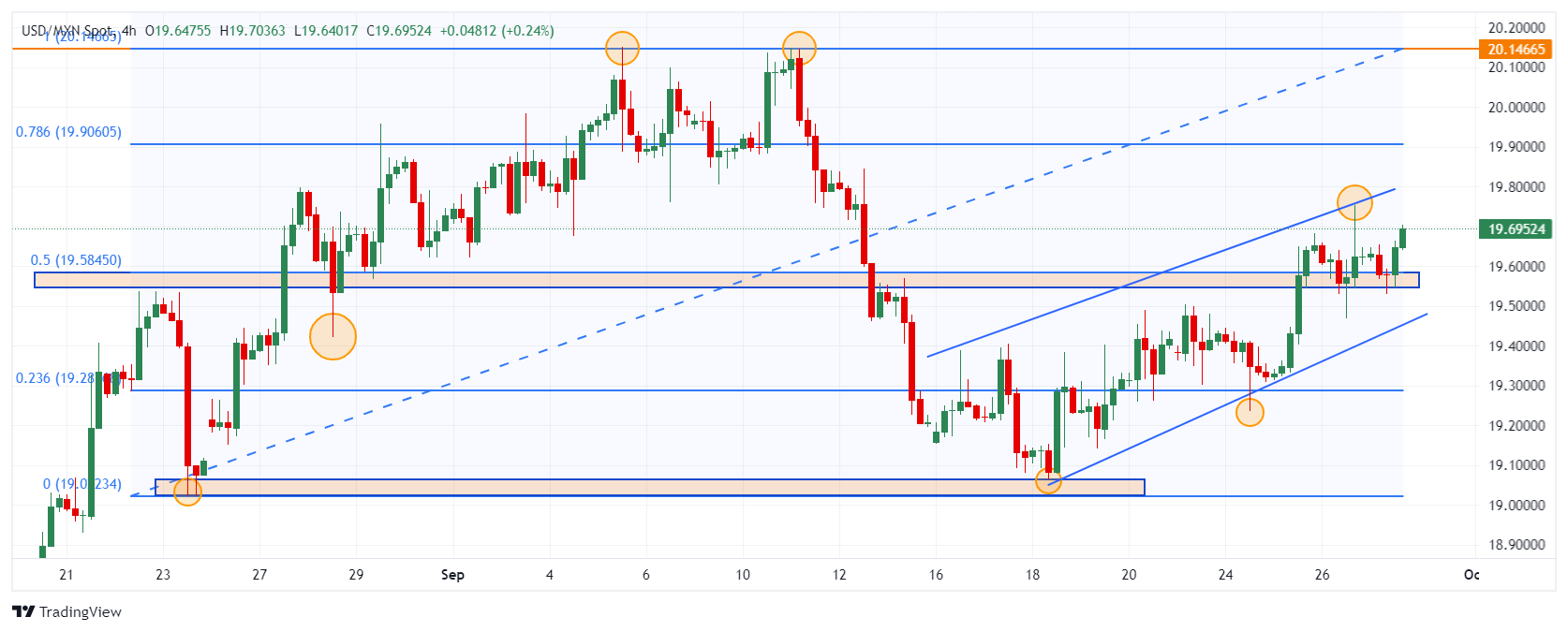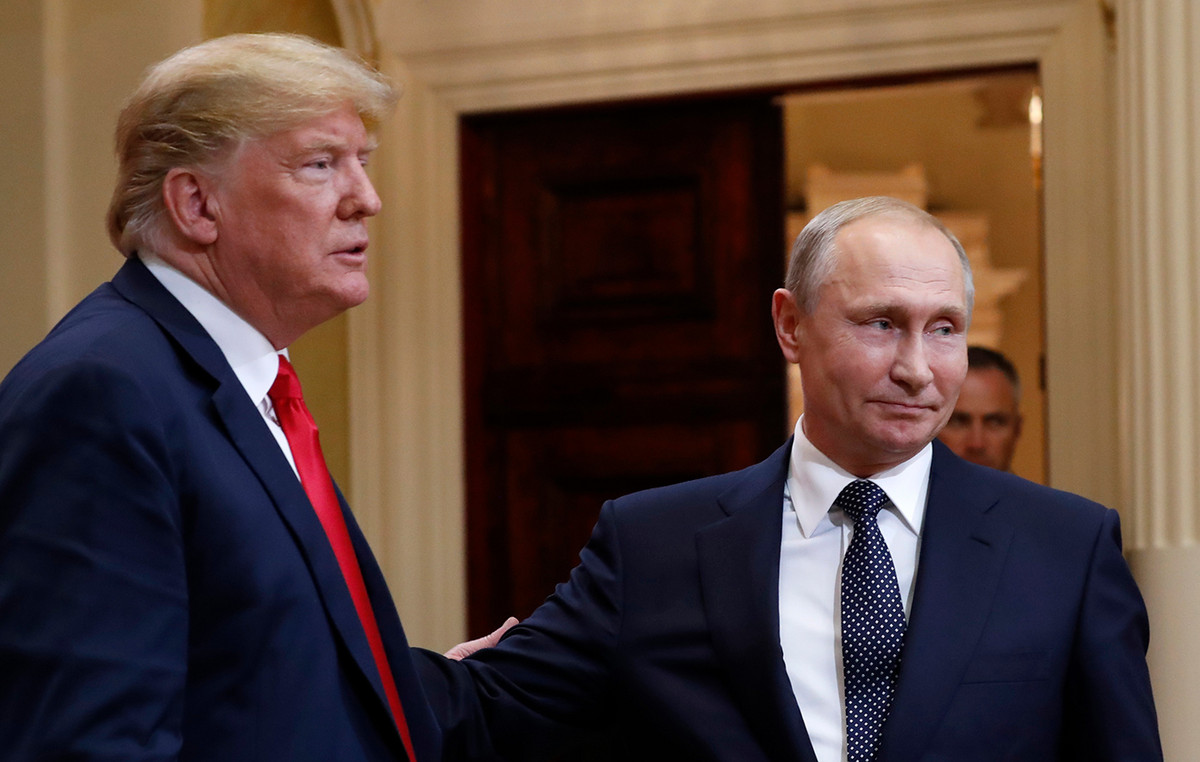- The price of the Dollar gains 0.40% daily, consolidating in the operating range of the previous session.
- Mexico’s trade balance increased its deficit in August to 4,868 million dollars.
- The Bank of Mexico made its monetary policy more flexible by reducing interest rates by 25 basis points to 10.50% from 10.75% yesterday.
USD/MXN marked a session high of $19.71, finding aggressive sellers that took the pair to a day’s low of $19.52. Currently, the price of the US Dollar is trading against the Mexican Peso at $19.70, rising 0.25% daily.
US Dollar reacts higher after US economic data
The Personal Consumption Index (PCE) registered an increase of 2.2% year-on-year in August, on par with the University of Michigan Consumer Confidence Index, which has increased to 70.1 in September, exceeding the 69.3 expected by the market. The Dollar Index (DXY) has fallen 0.04%, trading at 100.52. After the publication of the news, the US dollar registered an appreciation of 0.40% against the Mexican peso.
Mexico publishes its August trade balance after the Banxico hangover
Yesterday, the Bank of Mexico cut its interest rate by 25 basis points to place it at 10.50%, reaching its lowest level since December 2022. The monetary policy authority highlighted in its report that annual general inflation decreased from 5.57 % in July to 4.66% in the first half of September, confirming that underlying inflation maintained its downward trend.
Based on information presented today by the National Institute of Statistics and Geography (INEGI), Mexico’s trade balance registered a trade deficit of 4,688 million dollars in August, which compares with the deficit of 1,278 million $, in the same month of 2023. During the first eight months of 2024, the trade balance registered a deficit of 10,438 million dollars. The same period in 2023 the deficit was $8,428 million.
Following the news, the Mexican Peso remains stable, trading within the range of the previous session, trading above $19.70.
USD/MXN Price Levels
USD/MXN reacted lower to short-term resistance located at 19.75, given by the September 26 high, rejecting the upper end of a bullish channel.
We observe the closest support at 19.23, the minimum of September 24, which converges with the 23.6% Fibonacci retracement and with the lower end of a bullish channel. The next key support is at 19.07, the September 18 pivot point.
USD/MXN daily chart

The US Dollar FAQs
The United States Dollar (USD) is the official currency of the United States of America, and the “de facto” currency of a significant number of other countries where it is in circulation alongside local banknotes. According to 2022 data, it is the most traded currency in the world, with more than 88% of all global currency exchange operations, equivalent to an average of $6.6 trillion in daily transactions. After World War II, the USD took over from the pound sterling as the world’s reserve currency.
The single most important factor influencing the value of the US Dollar is monetary policy, which is determined by the Federal Reserve (Fed). The Fed has two mandates: achieve price stability (control inflation) and promote full employment. Your main tool to achieve these two objectives is to adjust interest rates. When prices rise too quickly and inflation exceeds the 2% target set by the Fed, the Fed raises rates, which favors the price of the dollar. When Inflation falls below 2% or the unemployment rate is too high, the Fed can lower interest rates, which weighs on the Dollar.
In extreme situations, the Federal Reserve can also print more dollars and enact quantitative easing (QE). QE is the process by which the Fed substantially increases the flow of credit into a clogged financial system. This is an unconventional policy measure used when credit has dried up because banks do not lend to each other (for fear of counterparty default). It is a last resort when a simple lowering of interest rates is unlikely to achieve the necessary result. It was the Fed’s weapon of choice to combat the credit crunch that occurred during the Great Financial Crisis of 2008. It involves the Fed printing more dollars and using them to buy US government bonds, primarily from financial institutions. QE usually leads to a weakening of the US Dollar.
Quantitative tightening (QT) is the reverse process by which the Federal Reserve stops purchasing bonds from financial institutions and does not reinvest the principal of maturing portfolio securities in new purchases. It is usually positive for the US dollar.
Source: Fx Street
I am Joshua Winder, a senior-level journalist and editor at World Stock Market. I specialize in covering news related to the stock market and economic trends. With more than 8 years of experience in this field, I have become an expert in financial reporting.







